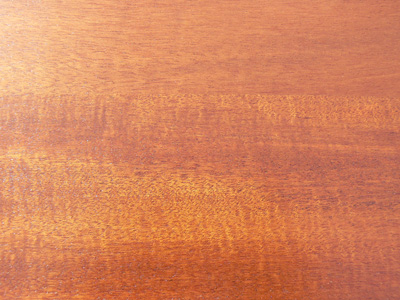The Tree: The tree is reported to reach heights of 170 feet (52 m), with trunk diameters of 60 to 72 inches (150 and 180 cm). Well-formed boles above small buttresses are reported to reach lengths of up to 50 feet (15 m). The timber is reported to be vulnerable to attack by dry-wood termites and powder-post beetles. Logs are reported to be highly susceptible to attack by pin-hole borers.
Appearance: The sapwood of Anderoba is pink when freshly cut but quickly turns to a pale grayish-brown after exposure. The heartwood is reddish brown when freshly cut and dulls slightly in shade with age. The species has a straight and sometimes interlocked grain and is medium to somewhat coarse in texture.
Properties: Andiroba is reported to have no odor, dries easily, and is has excellent dimensional stability characteristics. The wood has a medium to moderately coarse texture. Although Crabwood is similar to Honduras mahogany, it is reported to be less figured, and has a finer texture than Honduras mahogany. Wood luster is reported to range from low to high. There is no characteristic odor or taste.
Workability: Anderoba is relatively easy to cut and shows only slight dulling effects on tools. The wood has tendency to split under nailing making pre-boring a necessity, however. Screws hold well with Anderoba flooring. This species is reported to take stain and polish well.
Principal Uses: Some of Anderoba's uses include flooring, interior construction, cabinetry, veneer, furniture, and stair treads.
Grain: The grain is usually straight but is sometimes interlocked or roey. The wood exhibits an attractive stripe and parallel, irregular rays when quarter sawn.
Strength: The bending strength of air-dried wood is similar to that of Teak, which is considered to be strong. Compression parallel to grain is in the high range. Strength properties, especially stiffness, are rated as higher than those of Honduras mahogany. Hardness is rated as medium. It resists denting and marring about as well as white oak or birch. It is a heavy wood with high density. The wood closely resembles the mahoganies (Swietenia and Khaya).
Other Interesting Information: In flooring, Anderoba is most commonly spelled with an "i" but our lumber suppliers refer to this lumber with an "e" and hence, we also refer to it as And"e"roba.










Log In